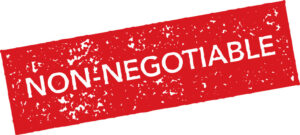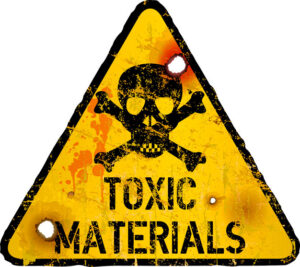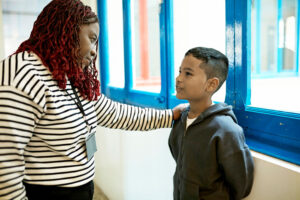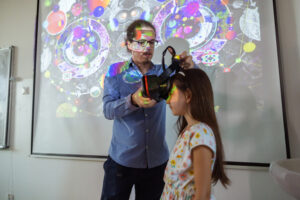Live Your Code: 7 Strategies That Will Help You Be the Most Effective Educator You Can Be
8/15/2022

Live your code!
There are so many ways to say the same thing…
…Be true to yourself!
…Stand up for yourself!
…Live by your morals!
…Have strong ethics!
…Don't let others change you!
…Stand up for what you believe in!
…Continue living your best life!
When what you believe in is compromised, what do you do? Do you lean in and persevere?
I am a huge Brene Brown follower. She states, "Lean into the discomfort of the work."
I found recently that "leaning" in can be the most difficult task you could ever do. In my experience the "discomfort" can be so tremendous that you second guess your job, you may even ask why you are in education, and can possibly make you look at jobs outside of the profession altogether.
After some affirmation from the correct people, I now know why I must lean in. Digging deep and finding the courage, I am leaning into this discomfort and I have created a mantra for myself that I continually repeat, "Stand up, and advocate for students and staff!"
In education, everything has come under the microscope. Things that were once never on a political platform have been highlighted in the most unusual ways in our schools across America.
School boards across America are changing. Trustees are getting voted onto boards that do not have children of school age, or if they do, they homeschool them. At the same time, parents are questioning curriculum at a higher rate than ever before. To note, parents have always had the ability to review, comment, and many school districts include parents on the curriculum committees that implement new resources. Though this may sound controversial, I would argue we want parents to be a part of our decision making process.
Running parallel to these situations, school administration is changing at an alarming rate in most states. There are not enough people wanting to become education leaders. Subsequently, colleges are not graduating enough teachers for what is needed in the next decade. I predict that there will be a teacher and leader shortage in the next decade in public education that has never been seen.
College students may see what is going on in education and are second guessing going into the field. With all this consternation, political unrest, and certain shortage of educators over the next decade, public education will continue to change. How can we communicate this need in order to go to a solution?
Unfortunately, many educators are finding it difficult to stand up for what is best for all students. Who says what is best for all students when a minority is so vocal and is persistent? What will it take to bring people together and decide on what is best for all students?
Local control in many states and school districts is strong. This can be a good thing, but what happens when the locally controlled curriculum is far from the middle of the road in educating the "mainstream" for all students?
It seems book bans, censored topics, and redefined policies are creating a curriculum where students are missing out on valuable learning opportunities. Learning about other cultures, learning about equity, learning about social and emotional regulation strategies, learning about diversity are all taking a backseat in school districts across the nation.
I predict with less diversified learning opportunities, social problems within our communities will continue. Using problem solving skills such as empathy, resilience, and compassion also will take a backseat. When this occurs, controversy and chaos continues to be more commonplace and people's pertinacious perceptions of their world become even less empathetic and more distant to others' viewpoints.
One of my favorite colleagues whom I follow in education had a great quote recently,
"Sometimes we subconsciously dehumanize people you disagree with. Be careful. In our self-righteousness, we can easily become the very things we dislike in others. Ultimately, the way we treat people we disagree with is a report card on what we've learned about love and compassion. Every single person you meet is afraid of something, loves something, and has lost something. Know this. Respect this. And be extra kind."
Thom Peck, Superintendent
Lewistown Public Schools
Lewistown, Montana
Living my code has been a mantra I learned from a philosophy called, High Trust Psychology®, which was developed by Denny McLaughlin. He worked with the famous researcher, Dr. William Glasser, who first developed the Choice Theory. Living one's code is the ability to stick to your convictions. In education, we have truths that we hold high that illustrate our moral compass.
Recently, I was chosen to present at a statewide conference (the state will remain anonymous, but you know who you are, state!), and was asked to change my presentation title, as well as any corresponding references to SEL. Evidently, so many people are connecting the Critical Race Theory to Social and Emotional Learning, that many schools (and now states), are banning such words.
TRUTH -- Teachers have been teaching social and emotional regulation for decades.
When a student needs strategies to fix a friendship at school, a teacher steps in and gives them words and actions to use. That is social learning. We have always taught social skills in our schools to make life better for everyone.
When a student comes to school hungry, neglected and sad from their homelife, learning that day takes a backseat. The teacher steps in to give them nourishment and emotional regulation strategies. This is emotional learning. We have always taught emotional skills in our schools to support students with most everything that life throws at them.
These types of social and emotional learning opportunities are so valuable both at home and at school. If we argue that SEL should only be addressed at home, what should happen the other eight hours while students are at school? Do we ignore their needs and say, "I am only here to teach you what 7 + 5 equals. You will need to go home to have your parents work with you on your emotional regulation." This may sound ridiculous, but I recently had a couple (no kids or grandkids in our school system) write into a local newspaper calling me out as superintendent for just that! They wanted me to teach reading and math, and leave the SEL stuff for parents.
When I live my code, I am sticking to my convictions. I am inherently going to work on skills with students that will give them the ability to problem solve life's situations, or at least a plethora of them!
In some communities, I know I am too much with my philosophical stances. When toxicity persists, I treat it like a sickness and remove myself. There are some things you can't change, but I will continue to focus on what I can.
Here are seven strategies that can support you in "Living Your Code" in education!
1 -- Know Your Non Negotiables…What do you believe in and what makes up your code?
 What do you believe in? If you were to argue what you believe in within the education field, what do you think you would defend? Here are five of my convictions and non-negotiables that I believe I can defend from my experience in and out of the classroom:
What do you believe in? If you were to argue what you believe in within the education field, what do you think you would defend? Here are five of my convictions and non-negotiables that I believe I can defend from my experience in and out of the classroom:
- Kindness, Empathy, and Compassion Should Be Modeled and Taught in Schools and at Home
- We Must Learn About Other's Cultures and Backgrounds, Diversity Is A Good Thing!
- Social and Emotional Regulation Is Needed Now More Than Ever Before
- Culture Eats Strategy for Breakfast
- When Creating a Positive Culture, High Expectations For Everyone is Vital
With these five making up a majority of my code, you can see where arguments could embark. I back my code with real life situations, research, and other professionals that have had the same experiences as myself.
Make a list of your top five convictions for education. What would be on your list?
2 -- Take Time To Listen and Learn…Living your code also means understanding the other side!
 So often we get into conversations with people who are unwilling to hear your side of the argument or story. Model for these people how you take time to listen and learn from them. This continual modeling of respect to people who are unable to listen to you will eventually pay off, if not, we get to choose to not be around these people.
So often we get into conversations with people who are unwilling to hear your side of the argument or story. Model for these people how you take time to listen and learn from them. This continual modeling of respect to people who are unable to listen to you will eventually pay off, if not, we get to choose to not be around these people.
The art of listening is just that, an art. When we fully listen, we are taking in not only the words of what someone else is saying but we are also attune to their tone of voice, continue to read their body language, and ultimately spend more time formulating and crafting our own response. Listening then becomes an art, as hearing is just the science of noise.
Love the quote, "God gave us two ears and one mouth for a reason. We should be listening twice as much as we are talking."
3 -- Treat Toxicity as a Sickness…Toxic behavior is contagious, stay away to stay healthy!
 Toxic people tear others down. They chose to not listen, in fact they are so stuck in their convictions they are unable to show compassion.
Toxic people tear others down. They chose to not listen, in fact they are so stuck in their convictions they are unable to show compassion.
Living one's code also means being able to understand and listen to the other side of your convictions. Your code turns into a toxic trait when you are unable to show empathy. We can then choose to not be around people that are toxic, and we must treat this toxicity as a sickness.
Unfortunately, in our society, people love the drama that comes with these toxic behaviors. I treat them as if they have a cold. We hold the power in how much time we are able to be around them. The healthier we are, the sooner we can remove ourselves from these toxic people.
4 -- Understand the Sympathy, Empathy, Compassion Continuum…We must continue to work towards acting with empathy and compassion.
 I first heard about the Compassion Continuum from two authors, Kristen Sauers and Pete Hall, who wrote the book, Fostering Resilient Learners (2016). They spoke to the fact that in order to create a trauma-invested school, we must teach this continuum.
I first heard about the Compassion Continuum from two authors, Kristen Sauers and Pete Hall, who wrote the book, Fostering Resilient Learners (2016). They spoke to the fact that in order to create a trauma-invested school, we must teach this continuum.
Sympathy -> Empathy -> Compassion
Sympathy is defined as feeling sorry for someone else, where empathy is a level of connectedness that requires more energy. Empathy is defined as the ability to understand someone else's feelings. What we do with this understanding is the most important aspect in this continuum. We can act on this empathy with compassion. Compassion is defined as taking action because of our understanding of sympathy and empathy for others.
We can teach compassion to our students by using this continuum. In fact, we can model this for everyone around us as it becomes part of our code!
5 -- Passion Drives Your Code…Passion for creating our code may change our perceptions, but don't waiver back and forth!
 I love connecting with passionate educators who made the decision to become teachers for all the right reasons. They believe in who they are and they believe they can make a difference in the lives of students. Nothing gives me more goosebumps and hope for the future than when I am around these people. I spend twice as much time listening, then speaking. In fact, my goal is to continue to find people with this same passion for educating kids!
I love connecting with passionate educators who made the decision to become teachers for all the right reasons. They believe in who they are and they believe they can make a difference in the lives of students. Nothing gives me more goosebumps and hope for the future than when I am around these people. I spend twice as much time listening, then speaking. In fact, my goal is to continue to find people with this same passion for educating kids!
Unfortunately, in education much of our passion has been stilted due to a small minority that is attacking public education. Many teacher's passion seems to diminish as we are questioned about everything we are doing with kids. We need this passion back, we need to live our code and do it with conviction.
I am finding in chatting with people around the United States that they are not speaking up about the great things going on in public education. They fear retaliation or negative feedback from factions in our communities. They take the pathway of least resistance. Some teachers are even changing the way they think and ultimately changing their code even though they don't believe in the change. They are making this change in order to stay out of the controversy. It seems to me they are giving up on their convictions. They don't want to expend the energy needed to communicate these convictions. Some teachers are even wavering in their beliefs…one week they support an issue, the next week they pull back.
We need that passion back as it drives our code!
6 -- Build Your PLN…Find other people who have a similar code as you, and build your team!
 It is not easy to stand alone in your convictions. Ridicule and targeted accusations make living our code difficult, and sometimes it may even feel impossible. In order to live our code, we must continually find other people who have a similar code so we can build a team.
It is not easy to stand alone in your convictions. Ridicule and targeted accusations make living our code difficult, and sometimes it may even feel impossible. In order to live our code, we must continually find other people who have a similar code so we can build a team.
Professional Learning Networks have changed education in the past decade like nothing else. Educators are finding other people who have similar interests or people that they want to learn from not only around the United States, but world-wide. In fact, I would argue social media and PLN's have been the single largest positive change in public education in the past decade.
Find your people, build your PLN, continue to build and rebuild your code!
7 -- Use Your Code to Provide Hope…Creating a vision of hope is vital to our existence.
 I love this trauma analogy first heard from Stacy York, LCSW. She described a coin as having two sides: one side is trauma, the other side is resiliency. In order for any person to make it through trauma, they must have the resiliency skills to cope found on the opposite side of the coin. Ultimately for those resiliency skills to be effective, hope must be the main ingredient to persevere.
I love this trauma analogy first heard from Stacy York, LCSW. She described a coin as having two sides: one side is trauma, the other side is resiliency. In order for any person to make it through trauma, they must have the resiliency skills to cope found on the opposite side of the coin. Ultimately for those resiliency skills to be effective, hope must be the main ingredient to persevere.
When hope is lost, people can lose their ability to cope and use their resiliency skills. Suicide in my state is at an all time high. In my work now, I make it a point to support and provide hope to students and families. Connecting resources, people, and strategies to students who may have lost hope is now part of my code that I live every day!
How can you provide hope and a vision for the future?
- Learning How to Say No and Set Boundaries with Parents - November 21, 2022
- If You Had Only One Behavior Strategy to Use in Your Classroom, What Would It Be? - September 26, 2022
- Live Your Code: 7 Strategies That Will Help You Be the Most Effective Educator You Can Be - August 15, 2022












